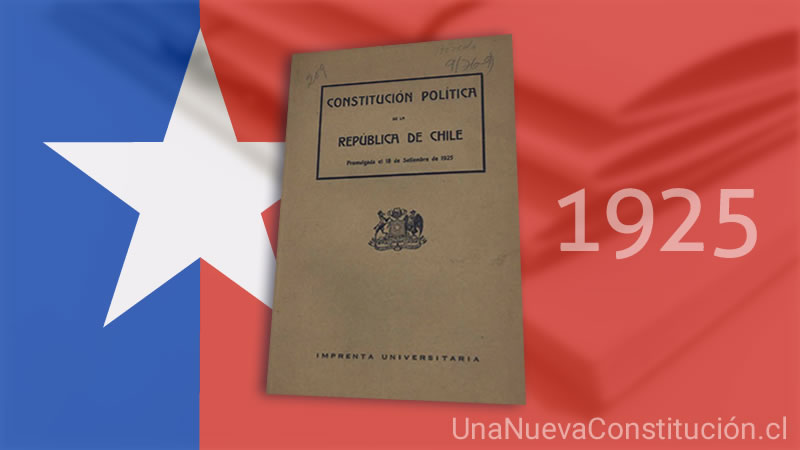In the brief historical references given by the Government about the previous Constitutions -in its information campaign on the constituent process- there is a serious error regarding the 1925 Constitution. This is that it states that this Constitution was written by 122 people. In fact, it was written by 15 people: Arturo Alessandri and 14 others appointed by him. Let us remember that from March to October 1925, Alessandri governed without a National Congress. The latter had been dissolved by the coup of 5 September 1924; but Alessandri, on returning to Chile from his brief self-exile (“recalled” by a new military coup in January 1925) kept it dissolved, so he ruled like a dictator, by means of decree-laws.
The worst thing is that both the reformist military and Alessandri himself had promised to convene a Constituent Assembly (yes!) to approve a new Constitution; a promise that (like so many others in our history…) was abandoned along the way. And he resorted to the same path as Pinochet of handpicking those who would draft it, with two important differences. One was that he was careful to give the appearance of plurality by including a communist (Manuel Hidalgo) and an independent (Roberto Meza Fuentes) in the group. And the other was that he himself participated in the group, not as just anyone, but by imposing his views on the most important issues, as two of its members later revealed: Carlos Vicuña Fuentes and Enrique Oyarzún.
But even more undemocratic was the fact that the large commission appointed by Alessandri – made up of 122 people – to approve or reject the text was ordered by military threat to approve the text, yes or no! Thus, after growing criticism of its authoritarian-presidential character, the commander-in-chief of the army – and also a member of the Commission – Mariano Navarrete, took the floor and said: “There is no need to be a great constitutionalist to declare, without fear of being mistaken, that the results of the parliamentary system have been disastrous for the country (…) The country is fed up with petty politicking and wants, once and for all, to have a strong Government, capable of guiding the destinies of the Nation towards an era of progress and social welfare. The leaders of the various political parties into which public opinion is divided should now take advantage of the many object lessons they have received since 5 September. From them they must deduce what the country wants and also bow respectfully to its sovereign will, for otherwise we shall have to carry out in the short term, under the pressure of force, the reforms which, on behalf of the people, the young element of the army has so significantly demanded (…) What would happen, gentlemen, if the hopes of youth were disappointed on this occasion? I do not wish to make unpleasant predictions. I leave it to your enlightened judgement to formulate the answer to this delicate question” (Mi actuación en las Revoluciones de 1924 y 1925; Centro de Estudios Bicentenario, Santiago, 2004; pp. 304-5).
Obviously, the Commission immediately submitted to such a serious summons and the Constitution was “approved” as drafted, in the end, by Alessandri. The text was subsequently ratified by a “trumped-up” plebiscite, similar to that of 1980, in which, according to Carlos Vicuña: “Alessandri devoted himself to winning the vote against all odds (…) he filled the country with tendentious and profuse propaganda at the expense of the state. He compromised authorities (…), employees, civil servants, mobilised the army and the police and persecuted with an iron fist the propaganda that the political parties tried to make (the Conservative, Radical and Communist parties declared themselves against it) (…) In Santiago the meetings were broken up by the police and the radical speakers dragged off to prison” (La tiranía en Chile; Lom Ediciones, 2002; p. 314).
Finally, there was a “plebiscite” which was carried out with a transparent vote (like the dictatorship’s “consultation” in 1978!) by using coloured ballots: red, for the text imposed by the army in the Commission; blue, for a modified parliamentary regime; and white, for the rejection of both. In any case, out of a total of 302,304 registered voters, only 127,509 (42.18%) voted in favour of Alessandri’s text, which obtained 93.9% of the votes.
This was, in short, the “democratic” origin of the 1925 Constitution…










